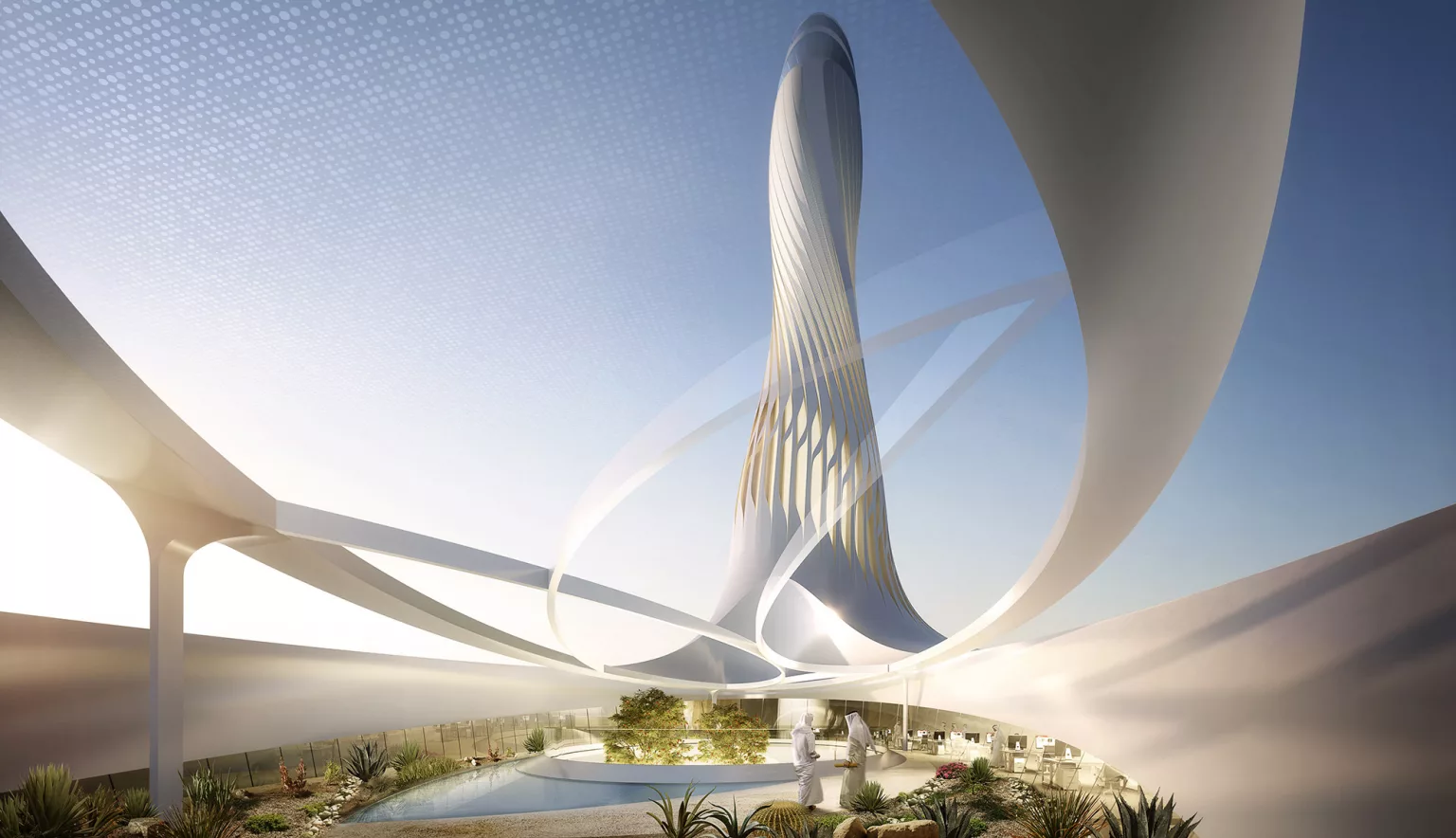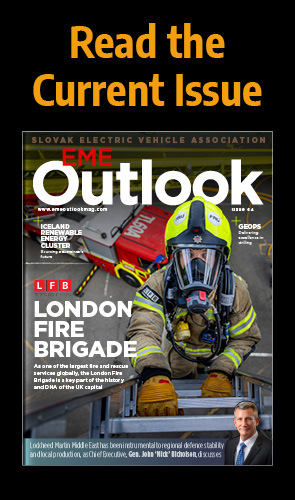Global architecture firm UNStudio is bringing its innovative, out-of-the-box design approach to the Middle East, the firm will soon open a permanent office in Dubai.
BREAKING NEW GROUND IN THE MIDDLE EAST
Over the past decade, contemporary architecture has transformed the built environment of Middle Eastern cities.
Dubai, for example, not only boasts the world’s tallest building – the spindle-like Burj Khalifa – but also the only man-made archipelago modelled on all seven continents.
“We are currently noticing a change of direction in the region; a shift away from standardisation, towards new concepts and projects that require more unique and bespoke solutions, particularly in the cultural sector,” says Ben van Berkel, Founder and Principal Architect at UNStudio, when asked what excites him about the sector.
UNStudio is an innovative international architectural design network with over three decades of experience delivering projects in countries across Europe, Asia, the Middle East and the Americas. It has offices in Amsterdam, Frankfurt, Shanghai and Hong Kong, and will soon be opening a fifth office in Dubai.
“Our aim is to attract regional clients that want to develop the special projects they see being built in all corners of the world, but are not yet doing at home,” Van Berkel explains.
“The biggest challenge lies in finding clients that understand what is required to succeed from the start of a project all the way through to delivery. This is essential if you want to ensure the level of quality and craftsmanship from the original design in the finished buildings.”
And when it comes to high-quality craftsmanship paired with design, UNStudio knows how to deliver. Drawing upon its 30 plus years of global experience, it is able to approach each project with a wealth of knowledge to hand, knowledge which it combines with an innovative and site-specific approach.
Van Berkel believes that it is this way of working that will allow UNStudio to make inroads into the Middle Eastern architecture sector.
“There are only a handful of renowned architectural design studios currently active in the Middle East. Most of these are corporate architectural firms with clear global business plans, who provide good, but not unique, innovative or special projects,” he explains.
“UNStudio approaches each project with specific attention to their particular location or programme, and from there, develops a holistic design that is innovative but very much rooted in the local circumstances and possibilities.”
In other words, the studio allows the landmarks it designs to be shaped by the environment in which they are situated – by the climate, the materials available locally and by referencing and conceptually integrating cultural aesthetics and traditions.
INNOVATIVE PROJECTS IN THE MIDDLE EAST
Van Berkel himself is an innovative architect, drawing inspiration from a variety of different sources.
“I am influenced by many personal fascinations; interests that would perhaps not commonly be perceived as being directly related to architecture,” he explains. “This can range from science – the first moon landing, for instance – to philosophy, literature, photography, fashion, art or music.
“For me inspiration can come from many different sources, but it is how these external references are eventually applied to design, to the organisation and the context, which is of particular interest to me.”
It should come as no surprise, then, that UNStudio has a reputation for unique, visually arresting designs. However, it is also aware that such innovation should be combined with “buildability”.
Since it first entered the GCC region in 2008, UNStudio has been working closely with its clients from the Middle East to find solutions that are both feasible but also innovative and out-of-the box. It has embarked upon numerous flagship projects within Qatar and the Middle East, including the Dubai Financial Market new headquarters and the wasl Tower, both based in Dubai and currently under construction.
“The wasl Tower is a benchmark 302-metre super-high-rise structure in a pivotal Dubai location and will have one of the world’s tallest ceramic facades,” Van Berkel explains.
“It will be a regional touchstone for adaptability and sustainability. The capacity of the building to acclimatise to local temperatures through shading and cooling techniques sets it apart from other buildings within the hot desert climate.”
The Tower epitomises the firm’s vision to produce designs that are adaptive, resilient and ‘futureproof’– that remain innovative despite the design process taking place over several years, and don’t contribute to a waste of materials and resources. It does all this without compromising on aesthetics. The Tower has a striking, contrapposto structure – a term derived from the visual arts, where it refers to a counterpoised figure – and a gleaming façade that will distinguish it from any buildings surrounding it.
Another project in Dubai is The Island, a hospitality and leisure project built on a 10.5-hectare island off the coast of Umm Suqeim. Alongside 1,400 hotel rooms and apartments, an accessible 800-metre waterfront, the construction will also offer entertainment, retail and restaurant options. Its design was developed as a unique pedestrianised new neighbourhood of the city.
“We are very proud that UNStudio has three major projects being executed in the city,” Van Berkel proclaims. “They are evidence of our investment in the region over the past decade, which required the hands on dedication of our site teams, in collaboration with the development managers, the local consultants and the client.”
Then there’s the Qatar Integrated Railway Project – one of the fastest and most advanced driverless metro systems in the world.
Phase one of the project involved the construction of three metro lines and relevant stations – 37 of which have been completed. UNStudio created a vision for the stations of this all-new network. It also collaborated with the Qatar Rail Architecture Department to produce an architectural branding manual, setting out guidelines on design, material usage and architectural details to ensure a consistent appearance across different sites.
UNStudios’ innovative, holistic approach has been well-received in the Middle East. It is currently working on other key projects in Qatar, as well as in Kuwait and Saudi Arabia. This growing portfolio of experience is, according to Van Berkel, giving the company confidence and the knowledge to know which opportunities to target. Furthermore, the company’s growing network of consultants and clients is enabling it to further its goal of a locally adapted approach.
LOOKING INTO THE FUTURE
COVID-19 may be systemically affecting local economies, but Van Berkel is feeling positive about his company’s future. He is looking forward to the official opening of its Dubai branch, headed by Director & Senior Architect Frans van Vuure and Senior Project & Design Coordinator Nick Marks, and increasing the number of clients from the GCC.
“Often they don’t believe that local consultants and contractors can achieve this level of work, but our experience – and projects like the wasl Tower and the Qatar Integrated Railway Project – show that we can deliver very high quality work in the region,” he explains.
Something else that van Berkel is excited about is the possibilities opening up in the GCC region for UNStudio’s sister company, UNSense. It is an architectural technology company that combines design-based thinking with insights derived from data technology.
“At UNSense we don’t believe in technology for the sake of technology,” van Berkel comments.
“We think the combination of data and design creates a powerful force to improve living conditions for people, and to ultimately create buildings and cities that are more humane, healthy, clean, safe, sustainable, and beneficial to the environment.”
“Data technology, sensorial technology and artificial intelligence enable us as architects and designers to create buildings that sense, understand and respond to the needs and behaviours of the people that work and live in them.”
UNSense is currently operating in Europe, developing designs and strategies for smart homes and cities, including the “100 Homes” project in Helmond – a ‘living lab’ where voluntary data exchange systems and technology are tested to create a positive impact on the inhabitants. It’s easy to see why Van Berkel is excited about what UNSense can do when it applies such insights to projects in the Middle East.
And it’s easy to see, too, why the company has experienced such a level of success over the decades. Its sustainable ethos, innovative artistic designs and data-driven insights look set to define the next chapter of its ever-evolving story.























